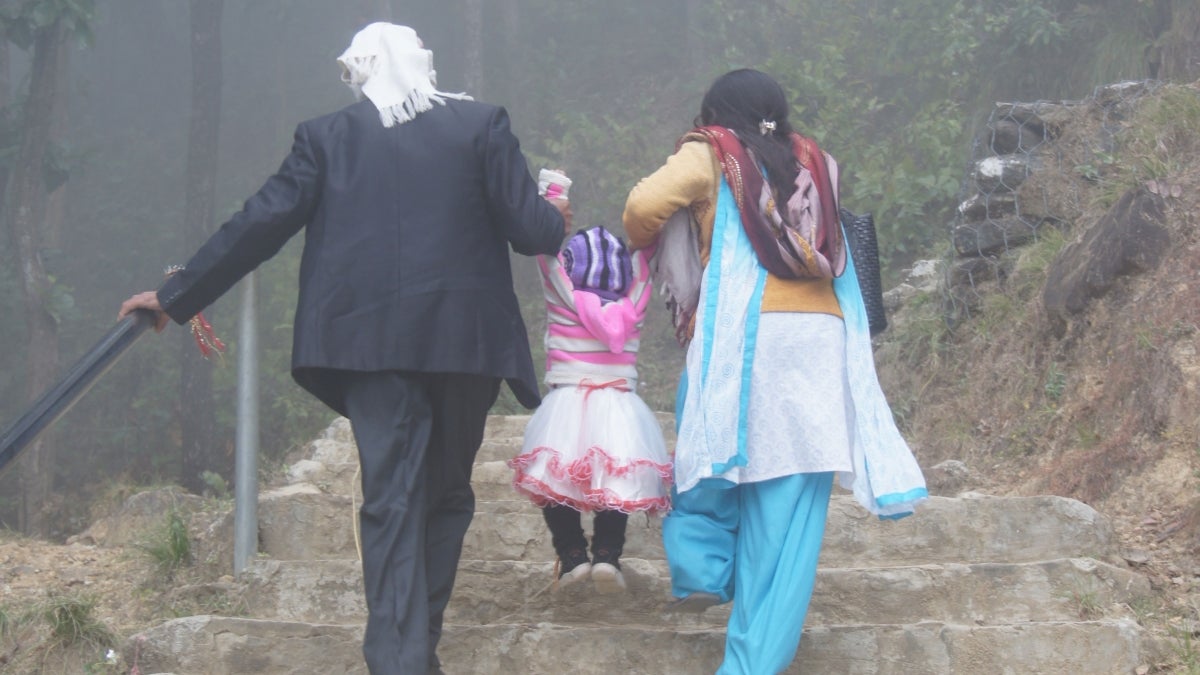Team to study impact of migration on the children left behind

A Nepali family participating in the Family Migration Context and Early Life Outcomes research project takes an afternoon walk. The project will support research in three settings where international and internal migration are prevalent: Jalisco, Mexico; Gaza Province, Mozambique; and Chitwan Valley, Nepal.
Photo courtesy of Jennifer Glick.
America is largely a country of immigrants. From the Pilgrims at Plymouth Rock, to the countless Europeans who passed through Ellis Island at the turn of the century, to modern-day migrant workers in search of labor, stories of people leaving their homeland in pursuit of a better life in the United States abound.
But what happens to those left behind? The family members who for whatever reason remain in their native land?
That’s what Jennifer Glick, professor in Arizona State University’s T. Denny Sanford School of Social and Family Dynamics wants to know, particularly in the case of the younger family members left behind.
“Migration is very much a global phenomenon,” she said. “We see it in the news all the time, and we have a lot of research that talks about the motivation of migration but not in terms of understanding how it affects the lives of children.”
Along with an interdisciplinary team of faculty from ASU and beyond — including assistant professor Natalie Wilkens and professor Scott Yabiku, both of the Sanford School, and Carlos Santos, assistant professor of counseling and counseling psychology in ASU’s College of Letters and Sciences — Glick will spend the next five years researching the role of migration in the lives of children and adolescents in communities of origin, thanks to a nearly $5 million grant from the National Institutes of Health.
The project, Family Migration Context and Early Life Outcomes (or, as Glick and colleagues refer to it, FAMELO), will support research in three settings where international and internal migration are prevalent: Jalisco, Mexico; Gaza Province, Mozambique; and Chitwan Valley, Nepal.
Within the overall research project are three separate, more distinct projects that will focus on: 1) children’s social competence and socio-emotional outcomes; 2) children’s school engagement and educational trajectories for youth with different exposures to migration in their households; and 3) adolescent transitions into romantic relationships and marriage.
“FAMELO’s three research projects have different research aims, but they are connected in that we all are interested in examining how migration influences the children and adolescents who are left behind,” said Wilkens, who will be focusing on children’s social competence and socio-emotional outcomes.
By focusing on different developmental outcomes and transitions, the projects combine to create a better overall view of how migration shapes family environments and life opportunities from childhood through the transition to adulthood.
“Understanding how children’s lives are impacted by the migration of their parents or siblings can help inform local schools where migration is prevalent. Our findings may also help local communities build services for families with migrants,” Glick said.
The first step will be to work with focus groups to determine the best ways to measure how children are affected by family members’ migration. The researchers will then interview and administer questionnaires to a large, representative sample of children and their parents/caregivers at two separate points in time in each research site.
“This design will allow us to examine how migration affects change in children’s outcomes over time, as well as compare processes across our research sites,” Wilkens said. “The data FAMELO will yield will be statistically complex … but, more importantly, will be impactful.”
More Arts, humanities and education

ASU student finds connection to his family's history in dance archives
First-year graduate student Garrett Keeto was visiting the Cross-Cultural Dance Resources Collections at Arizona State University…

ASU alumna makes her way back to the ASU Gammage stage for '¡azúcar!'
As the Los Angeles-based CONTRA-TIEMPO dance group prepares for its upcoming production “¡azúcar!” at ASU Gammage, for one member…

ASU FIDM professor wins international award for fantastical, sustainable creation
The horror of an ailing Earth inspired an Arizona State University fashion professor to create a fantastical garment out of…